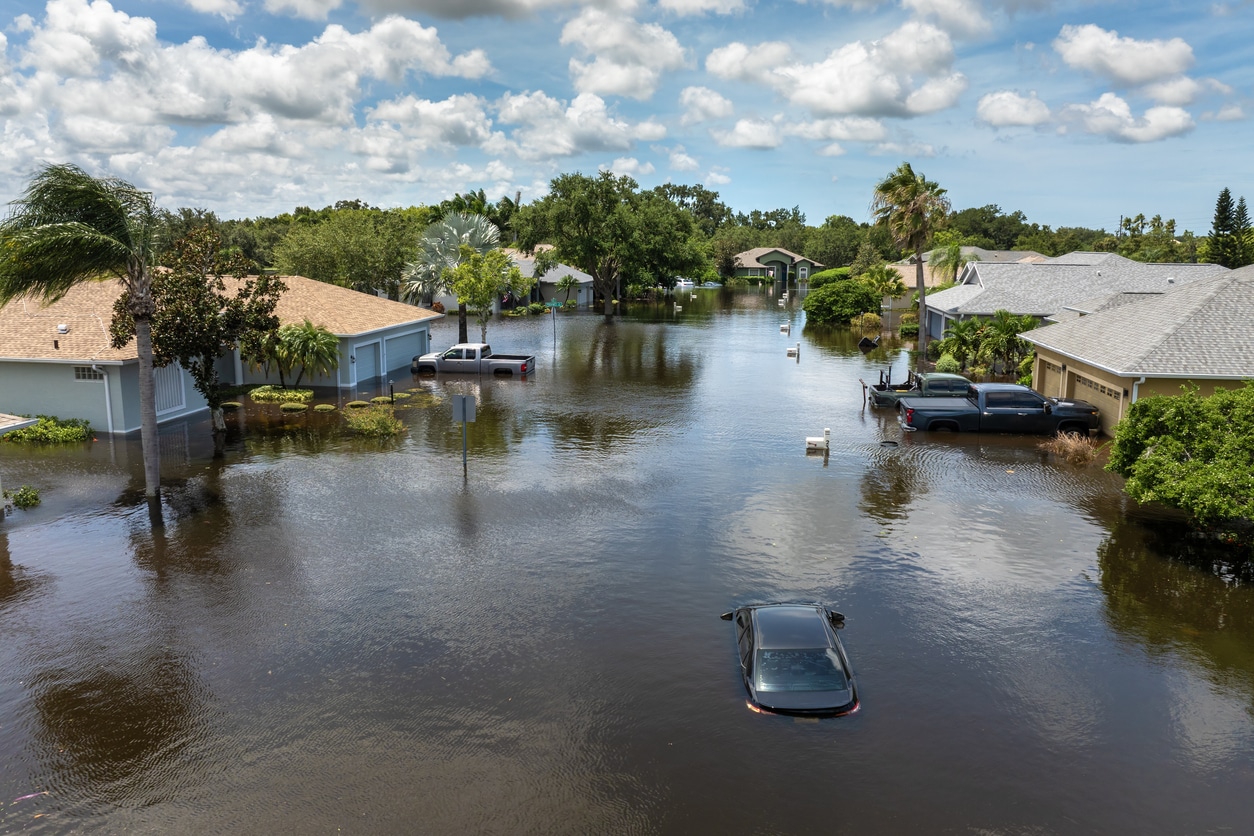In a recent report from the Neptune Flood Research Group, the challenges and systemic issues plaguing the U.S. flood insurance market were brought into sharp focus. The aftermath of Hurricanes Helene and Milton has underscored the critical need for more comprehensive flood insurance solutions and highlighted the limitations of current federal programs.
Record-Breaking Losses and NFIP’s Strain
Hurricane Helene has emerged as a historic event for the National Flood Insurance Program (NFIP), with over 55,000 claims filed as of early November 2024. Estimated losses for Helene range between $6 billion and $7 billion, far exceeding those from Hurricane Ian in 2022. The NFIP is expected to handle nearly 100,000 claims across all 2024 flood events, driving its annual loss ratio beyond 200% and emphasizing the program’s financial vulnerability.
While Hurricane Milton’s projected losses of $1.5 billion to $2.5 billion are smaller, its impact is significant. Together, these storms have amplified the strain on an NFIP limited by outdated risk models and insufficient coverage caps.
The Growing Role of Private Flood Insurance
As frustrations with the NFIP’s limitations grow, private flood insurers like Neptune Flood are stepping up to fill the void. Neptune, the largest private flood insurer in the U.S., reported substantial losses from the two hurricanes, with payouts expected to exceed $500 million. Unlike the NFIP, Neptune offers higher coverage limits and additional benefits like temporary living expense coverage, making it a more comprehensive option for homeowners and businesses.
Pinellas County: A Case Study of Risk
Pinellas County, Florida, illustrates the stark contrast between insured and uninsured losses. While 22,000 NFIP claims were filed for Hurricane Helene, post-storm surveys identified over 40,000 flood-damaged buildings, highlighting significant coverage gaps. These figures reveal the pressing need for broader insurance adoption, especially in high-risk areas.
Challenges with NFIP’s Risk Rating 2.0 and Outdated Flood Maps
The NFIP’s transition to Risk Rating 2.0 in 2021 introduced risk-based pricing to address long-standing deficiencies. However, with premium increases capped at 18% annually, full compliance is not expected until 2047. This delay, coupled with outdated flood maps, leaves millions of homeowners unaware of their actual flood risk.
For instance, Broward County, Florida, recently updated its flood maps for the first time in 40 years, adding 88,000 properties to high-risk zones. Nationwide, more than 3,000 FEMA flood maps are over 15 years old, creating significant educational and financial barriers for property owners.
Building Resilient Communities
As Florida rebuilds, FEMA’s Substantial Improvement rule mandates that homes with severe damage must meet current building codes, promoting long-term resilience. However, financial constraints, exacerbated by the depleted Small Business Administration disaster loan program, may hinder compliance for many homeowners.
Private insurers like Neptune Flood are pivotal in addressing these challenges. Leveraging advanced data science and AI, Neptune provides fair pricing and tailored coverage that bridges the gap between government programs and market demand.
Conclusion
The report from Neptune Flood Research Group emphasizes the urgency of reforming the flood insurance market. Updating flood maps, expanding education efforts, and promoting private insurance adoption are essential steps toward a sustainable future. As Neptune’s CEO Trevor Burgess aptly noted, “Our mission is to increase the number of families and businesses with flood insurance across the country.” With private insurers leading the way, the U.S. has an opportunity to build a more resilient, prepared nation in the face of growing climate risks.













